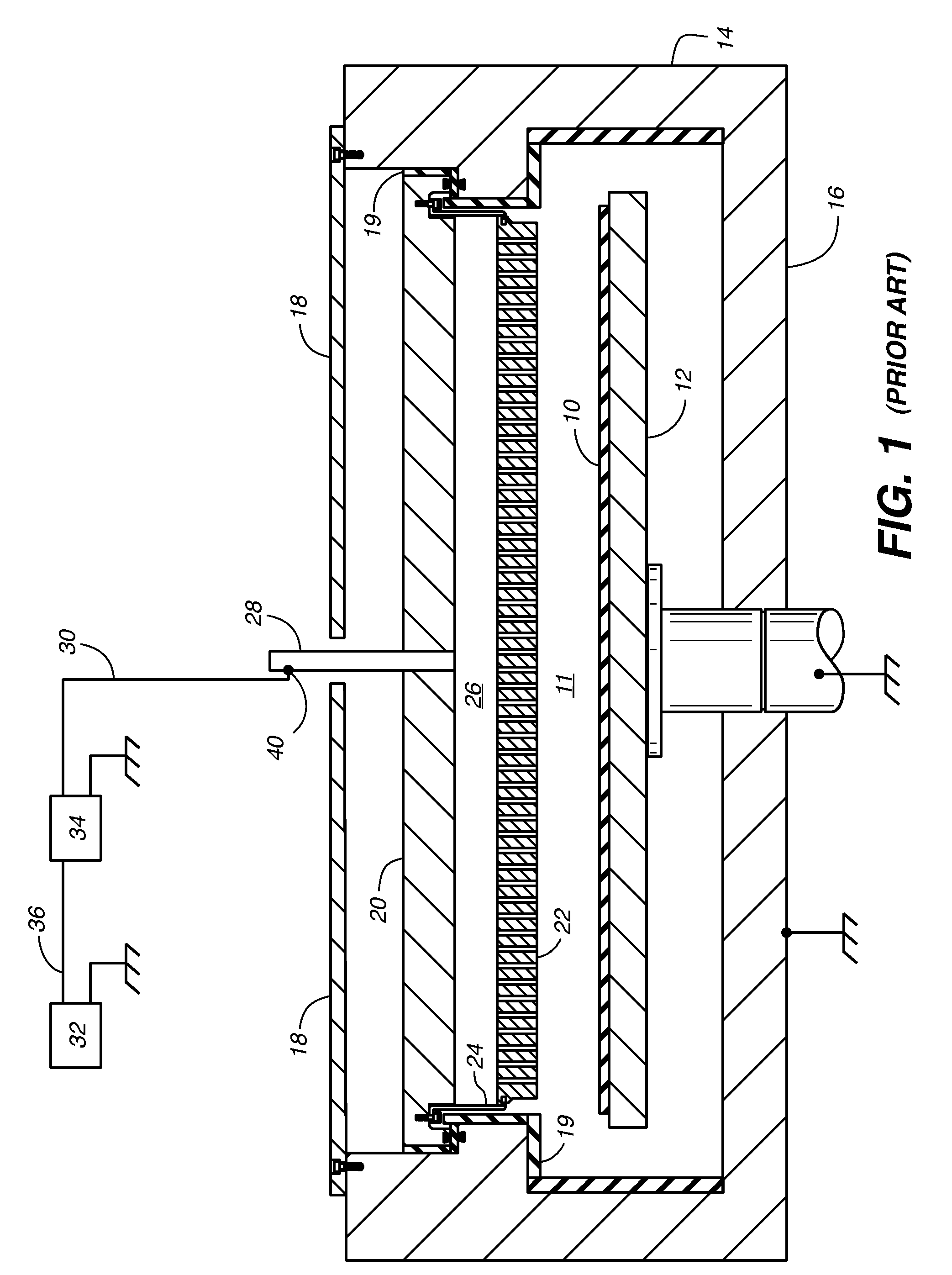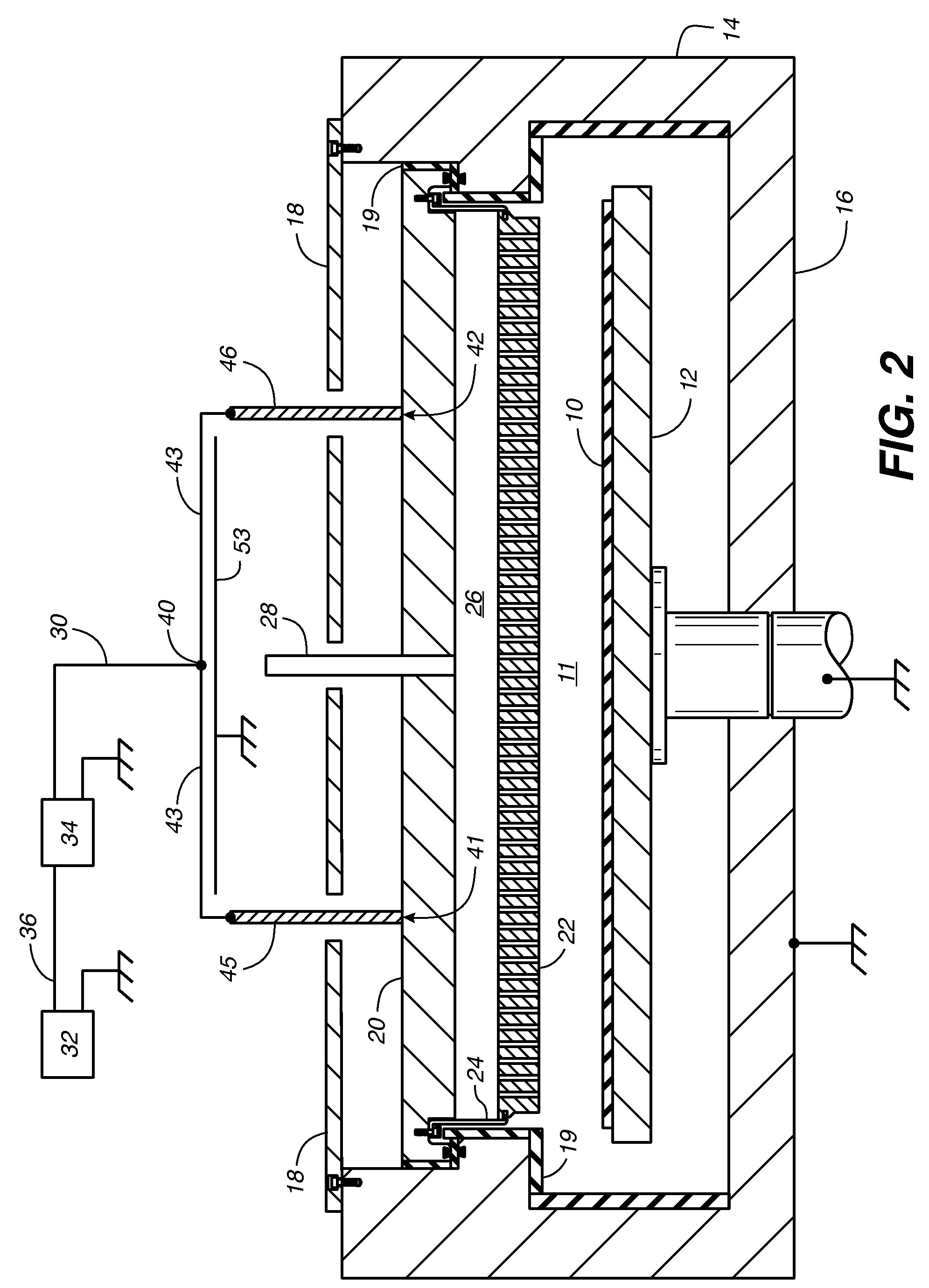RF bus and RF return bus for plasma chamber electrode
a return bus and electrode technology, applied in the field of coupling rf power, can solve the problems of failure of capacitors reduce the inductance of the electrical connection, reduce the risk of atmospheric arcing, and reduce the inductance advantageously the peak voltage within the rf circuitry
- Summary
- Abstract
- Description
- Claims
- Application Information
AI Technical Summary
Benefits of technology
Problems solved by technology
Method used
Image
Examples
second embodiment
[0052]In a second embodiment, the capacitance between an RF bus conductor 43, 44 and its corresponding RF return bus conductor 53, 54 is greater than the capacitance between that RF bus conductor and the electrically grounded chamber wall 14-18.
third embodiment
[0053]In a third embodiment, an RF bus conductor 43, 44 and its corresponding RF return bus conductor 53, 54 have respective surfaces that are parallel and face each other, wherein the two surfaces are separated by a spacing that is less than the spacing between the RF bus conductor and any of the electrically grounded chamber walls that are parallel to the first surface.
fourth embodiment
[0054]In a fourth embodiment, an RF bus conductor 43, 44 and its corresponding RF return bus conductor 53, 54 have respective surfaces that are parallel and face each other, wherein the two surfaces are separated by a spacing that is less than the width of either of the two surfaces in any direction.
[0055]In any of the embodiments defined above, one can maximize the benefit of reducing the inductance of the entire RF current path from the output of the impedance matching network 34 to the plasma by maximizing the fraction of such RF current path that is implemented by the parallel, closely-spaced RF bus and RF return bus conductors of the present invention. In other words, it is beneficial for the RF bus and RF return bus conductors to occupy a substantial fraction of such RF current path.
[0056]For example, this “substantial fraction” criterion is satisfied if the RF bus conductor occupies at least one-half the length of the electrical connection path extending from the output of th...
PUM
| Property | Measurement | Unit |
|---|---|---|
| length | aaaaa | aaaaa |
| width | aaaaa | aaaaa |
| capacitance | aaaaa | aaaaa |
Abstract
Description
Claims
Application Information
 Login to View More
Login to View More - R&D
- Intellectual Property
- Life Sciences
- Materials
- Tech Scout
- Unparalleled Data Quality
- Higher Quality Content
- 60% Fewer Hallucinations
Browse by: Latest US Patents, China's latest patents, Technical Efficacy Thesaurus, Application Domain, Technology Topic, Popular Technical Reports.
© 2025 PatSnap. All rights reserved.Legal|Privacy policy|Modern Slavery Act Transparency Statement|Sitemap|About US| Contact US: help@patsnap.com



